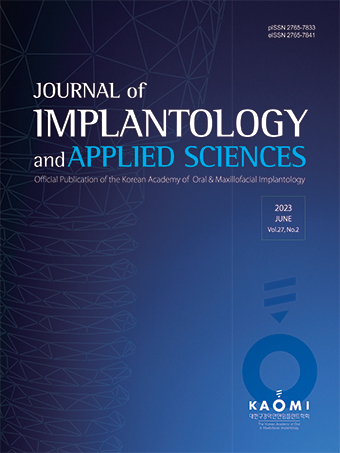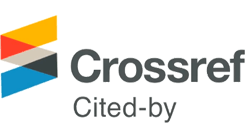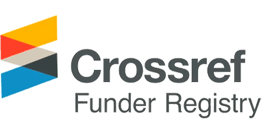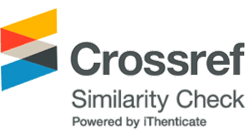-
Original Article

- Comparative Analysis of Three Modalities for Maxillary Sinus Perforation Repair: A Retrospective Study
- Jong-Hoon Lee, Jeoung-A Yu, Seong-Ho Choi, Dong-Woon Lee
- Purpose: This study aimed to analyze the prognosis of implant placement after maxillary sinus perforation repair using a collagen membrane during sinus …
- Purpose: This study aimed to analyze the prognosis of implant placement after maxillary sinus perforation repair using a collagen membrane during sinus elevation surgery.Materials and Methods: The radiographic and clinical data of 27 patients who underwent simultaneous or delayed implant placement with perforation repair (using collagen membranes) were retrospectively analyzed. The patients were divided into the following three groups: group 1: perforation repair, bone grafting, and simultaneous implant placement (nine patients, 19 implants); group 2: perforation repair, no bone grafting, and simultaneous implant placement (11 patients, 19 implants); group 3: perforation repair, bone grafting, and delayed implant placement (seven patients, 15 implants). The follow-up period was at least 2 years for all patients. Results: No significant differences in implant survival rates were observed between groups. Marginal bone loss was minimal in all groups with some exceptions. The thickness of the maxillary sinus measured on the day of surgery differed significantly between the groups, potentially attributed to the variations in the surgical materials employed. However, the thickness normalized in all groups at 1-year follow-up.Conclusion: This study suggests that simultaneous and delayed implant placement in cases of perforated maxillary sinus membranes repaired with collagen membranes during sinus elevation surgery can achieve favorable long-term outcomes. In certain cases, simultaneous implant placement without bone grafting is a viable option. - COLLAPSE
-
Original Article

- Evaluation of Factors Influencing Maxillary Sinus Floor Augmentation for Implant Placement: A Retrospective Study
- Jihun Cha, Jaeyoung Ryu, Seunggon Jung, Hong-Ju Park, Hee-Kyun Oh, Min-Suk Kook
- Purpose: This retrospective study compared the maxillary sinus floor augmentation techniques (lateral and transcrestal approaches) to assess the impact of bone grafting, …
- Purpose: This retrospective study compared the maxillary sinus floor augmentation techniques (lateral and transcrestal approaches) to assess the impact of bone grafting, graft materials, and initial residual bone height (RBH). Materials and Methods: Fifty patients who underwent maxillary sinus floor augmentation for posterior maxillary implant placement were included. Panoramic radiographs were obtained before surgery (T0), immediately after surgery (T1), and 6-10 months post-surgery (T2). Length measurements on panoramic radiographs were performed using a digital caliper at T1 and T2. Statistical validation included one-way ANOVA, t-tests, Mann-Whitney U tests, and correlation analyses. Multivariate linear regression was used to assess associations after adjusting for confounding factors.Results: Of the 50 patients, 35 underwent a transcrestal approach and 15 underwent a lateral approach. The results showed significant endosinus bone gain (ESBG) differences between allogeneic and xenogeneic grafts and no grafts (p < .001). Osteotomy sinus floor elevation without grafting yielded 3.24 ± 1.42 of ESBG. When divided into three groups based on initial RBH, RBH 1 had 27 patients, RBH 2 had 12 patients, and RBH 3 had 11 patients. Within the RBH group 1 (RBH under 4), the lateral approach had significantly greater ESBG than the transcrestal approach (p < .001). Multivariate linear regression analysis confirmed statistically significant associations between the studied variables after adjusting for confounding factors.Conclusion: When the RBH is < 4 mm, lateral-approach sinus augmentation and bone grafting should be performed to attain significant ESBG. The RBH, bone graft materials, and sinus elevation techniques vary considerably in ESBG - COLLAPSE
-
Clinical or Case Report

- Digital Guided Implant Placement using Sinus Lift with Iliac Bone Graft: A Case Report
- Euntae Joo, Yootaek Shin, Sang Min Ham, Jee Hwan Kim, Jun-Young Kim
- To restore masticatory function, dental implants require adequate bone support. For extensive maxillary bone loss, sinus lift surgery with bone grafting is …
- To restore masticatory function, dental implants require adequate bone support. For extensive maxillary bone loss, sinus lift surgery with bone grafting is often employed, favoring the autogenous iliac crest bone for better implant integration. Guides aid in the precise placement of implants and can reduce surgery time. In this context, an approach that combines of sinus lifting, bone grafting, and implant placement can be beneficial. In April 2020, a 58-year-old male presented with severe left maxillary alveolar bone atrophy and peri-implantitis of the right maxilla. Implants #15i, # 16i, and # 17i were removed, followed by bilateral sinus lift, bone grafting, and implant placement. During the 2-year follow-up after prosthesis placement, both the graft material and implants remained stable without complications. Iliac bone grafts exhibit greater resorption than other graft materials. In this case, implant positioning based on virtual planning and modifications guided by experience was performed without complications. - COLLAPSE
-
Clinical or Case Report

- One-step Approach for Radicular Cyst Removal in the Maxillary Sinus and Implant Placement in the Posterior Maxilla: A Case Report with a 3-Year Follow-Up
- Won-Bae Park, Hyun-Chang Lim
- A 39-year-old woman with a large radicular cyst in their left maxillary sinus desired implant treatment in the area of tooth #25 …
- A 39-year-old woman with a large radicular cyst in their left maxillary sinus desired implant treatment in the area of tooth #25 and #26. The cyst was carefully removed using a lateral window approach. During the removal, the sinus membrane next to the cyst also partially removed. Two implants were then placed, measuring Ø4.3 × 8 mm at #25 and Ø4.8 × 8 mm at #26. Due to insufficient bone height in those areas, the implants extended into the sinus floor. The implant protrusion into the sinus measured 3.0 mm at #25 and 0.5 mm at #26. No bone substitute material was used in the sinus. The healing after the surgery went smoothly. After a three-year follow-up, the protruding part of the implant was completely covered by newly formed bone, and there was no evidence of the cyst returning. This case report demonstrates that removing a radicular cyst and placing an implant simultaneously is possible with careful patient selection. - COLLAPSE
-
Clinical or Case Report

- Full-arch Reconstruction using a Mixture of Xenograft and Octacalcium Phosphate-based Alloplast: A Case Report
- Kyeong-Ok Lim, Won-Pyo Lee, Jooseong Kim, Robum Lee
- In cases of severely atrophic edentulous maxilla, reconstruction, including lateral sinus floor elevation (LSFE) and alveolar ridge augmentation is performed using anorganic …
- In cases of severely atrophic edentulous maxilla, reconstruction, including lateral sinus floor elevation (LSFE) and alveolar ridge augmentation is performed using anorganic bovine bone matrix (ABBM) and/or autogenous bone. In this case, a 1:1 mixture of ABBM and octacalcium phosphate (OCP) was used for bilateral LSFE and vertical ridge augmentation. After a 7-month healing period, seven implants were successfully placed in the regenerated bone without the need for additional bone grafting. Core biopsy revealed a new bone formation rate of 43.8%. Among the residual graft materials, OCP and ABBM accounted for 2.9% and 7.1%, respectively and connective tissue comprised 46.2%. Within the limitations of this case, the combination of ABBM and OCP appeared to be a reliable choice for bone regeneration. - COLLAPSE
-
Clinical or Case Report

- A Case of Surgical Technique to Overcome Vertical Bone Loss using a Resorbable Membrane with Fixation Screw and Sinus Crestal Approach: An 8-year Follow-up
- Jun-Hyeong Kong, Dae-Young Kang
- A 42-year-old male patient presented with severe periodontal disease requiring extensive vertical bone augmentation (VBA) prior to implant placement. Following tooth extraction …
- A 42-year-old male patient presented with severe periodontal disease requiring extensive vertical bone augmentation (VBA) prior to implant placement. Following tooth extraction and periodontal treatment, VBA was achieved using a xenogeneic graft and stabilized with a native bilayer collagen membrane and fixation screw. Owing to the limited volume maintenance of the resorbable membrane, the implant was installed with reinforcement using a sinus crestal approach. Over an 8-year follow-up period, the implant exhibited stable alveolar bone without signs of peri-implantitis or significant bone resorption, suggesting the efficacy and longevity of this technique. - COLLAPSE
Journal Informaiton
 Journal of implantology and applied sciences
Journal of implantology and applied sciences
Journal Informaiton
Journal Informaiton - close
 Journal of implantology and applied sciences
Journal of implantology and applied sciences













